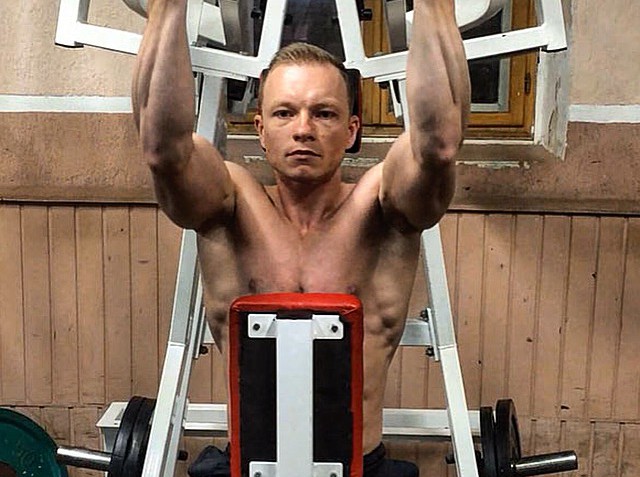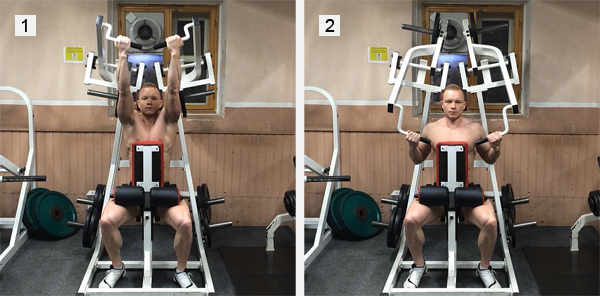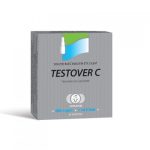Thrust from above in a vertical simulator
The starting position is sitting in the vertical simulator, fixing the hips under the rollers. Take the handrail of the simulator with a back grip.
1. Take a breath and, fixing the chest in a special focus of the simulator, pull the handrails down.
2. Make an exhalation at the end of the movement.
3. Return the handrail of the machine to its original position.
Tip: breathing during exercise
Performing exercises
Exercise to work out the back muscles. It perfectly loads the latissimus muscles of the back, includes the lower part of the trapezius muscles, involves the use of round and rhomboid muscles of the back, as well as the posterior deltas, biceps and forearms.
This simulator will be found in almost every self-respecting gym that takes care of the safety of young athletes.
Exercise perfectly helps to master the correct dynamics of performing similar exercises, such as the pull of the upper block with a narrow or wide grip.
Notes:
1. At the lowest point of the motion, we reduce the blades.
This allows you to focus on the muscles of the back. When combining the blades into the work include: trapezoid, rhomboid and posterior deltoid muscles.
2. At the bottom point of the exercise, we fix the movement for 1-2 seconds, at this moment we strain the muscles of the back as much as possible.
Carrying out the exercise with the fixation, allows you to work out a good shape and relief, also helps to isolate the muscles of the back (biceps and forearms are strained to a lesser extent).
Muscles and the approximate effectiveness of the exercise for the development of muscle fibers: *
The widest: 100%
Round and diamond: 100%
Trapezium: 80%
Rear deltas: 80%
Biceps: 80%
Forearm: 80%
* Subjective assessment, solely based on personal experience of training.
Exercise Application in a Vertical Simulator
To: To everyone, from beginner to master.
When: In the beginning or in the first half of the workout. After pulling from above in the vertical simulator, perform two exercises for the back – the pull of the lower block and the pull of the dumbbells with one hand.
How many:
- Stamina – 3-4 sets of 20-25 reps
- Weight loss / relief / drying – 3-4 sets for 15-20 reps
- Mass – 4-6 sets of 6-10 reps
- Strength – it’s better to do a basic exercise – pull-ups with extra weight
Technique of execution
- Set the optimal height of the thrust rollers for the legs of the block simulator in vertical traction: they must firmly fix the hips, preventing them from tearing away from the bench during the vertical pull with a wide grip. The pelvis must be placed on the seat so that the top block and neck are in front of the chest, and not above you so that you can perform vertical traction with a wide grip in the right motion vector.
- Slightly lift, grab the ends of the long griffon with a grip from above, or use hand grips or straps to fix the hands, which significantly relieve the load on the forearms when performing vertical traction with a wide grip, thus giving the load back to the widest muscles. Pull the block down, sit on the seat of the simulator and place the hips directly under the rollers to lock you in.
- The trunk and arms should be level, and shoulders slightly raised. The position of the body resembles the letter “U”. The thighs are tightly fixed between the rollers and the seat, legs must be pressed against the floor.
- Tighten the muscles of the belt and do not hold them in tension until the end of the approach of vertical traction – it is the lumbar muscles that ensure the fixation of the torso in the straightened position.
- Take a deep breath and, holding your breath. Tighten the latissimus muscles of the back and, pulling the shoulder blades toward each other, pull the neck strictly down.
- The elbows must follow the trajectory strictly parallel, along the sides and look to the sides and back. When the neck reaches your shoulders, stop for a while and strain your back muscles even more. Then slowly return the neck in the reverse order of movements.
- On top again, perform a small delay – this will help to better stretch the muscular fascia of the latissimus muscles of the back.
Advice
- Every time starting the pull of the vertical block with a wide grip, check yourself: hands and body must be fully straightened, and shoulders slightly raised. This initial position will provide the maximum amplitude of movement and will concentrate the load on the upper part of the latissimus muscles of the back.
- The wider the grip, the more the upper part of the broadest muscles joins, the formation of which determines the width of your back. With a narrow grip, the load is concentrated on the bottom of the broadest muscles. The best distance between the palms should be about 50 cm wider than your shoulders.
- To direct the load to the upper part of the latissimus muscles, always hold the body level and pull the block strictly down. By pulling back the torso, you switch the load to the rear deltas and the bottom of the latissimus muscles of the back.
- Stopping breathing during vertical draft with a wide grip helps to keep the body straight, and allows you to develop a stronger force and makes the exercise more secure.
- The thrust of the block down begins with the vault of the blades to each other, then the elbows come into operation, which descend strictly downwards.
- Pull the block down to the level of the shoulders or upper chest.
- With the thrust of the vertical block, do not engage the biceps. The role of the biceps in this exercise is the stabilization of the elbow joint.
Application
Intended: Experienced athletes who have at least 1 year of training experience.
When: At the beginning of training the muscles of the back, after pulling up with weighting. At the end of the vertical traction with a wide grip, perform drafts in the slope and horizontal drafts.
How many: 4 sets of 10-12 repetitions.































